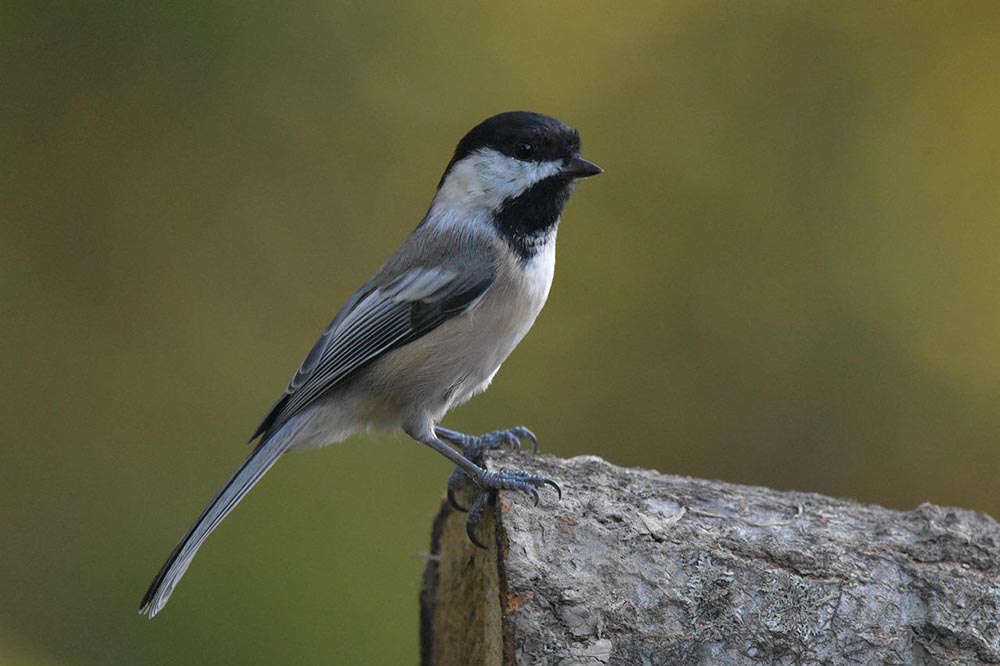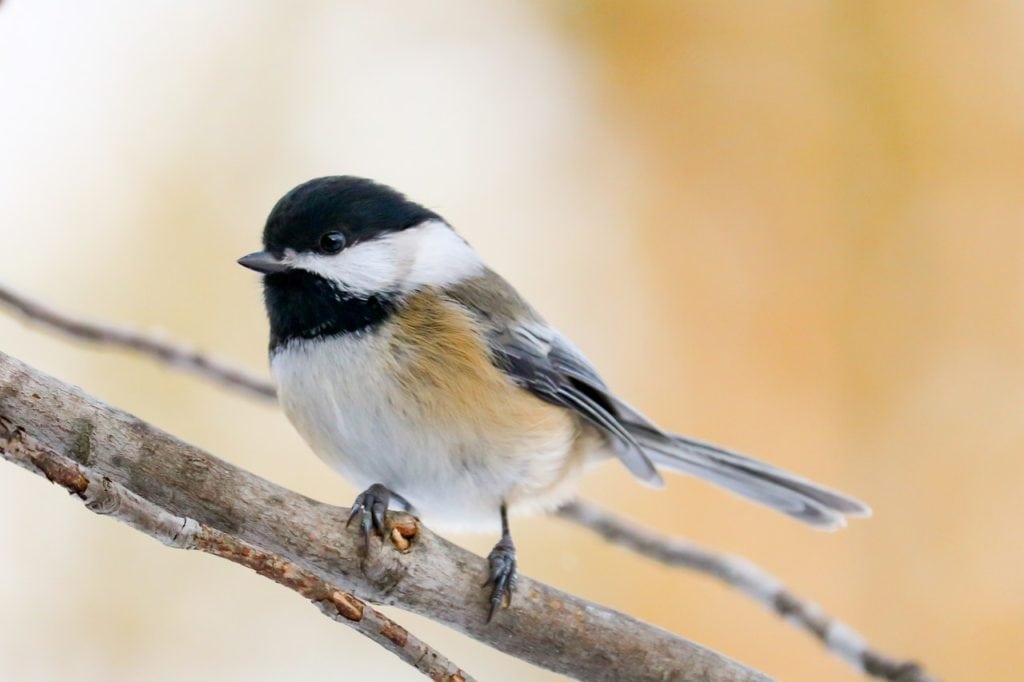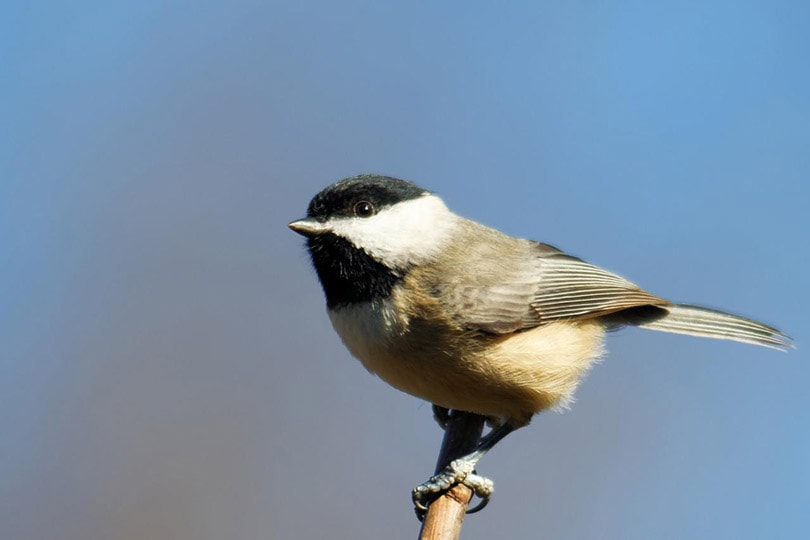What Is Massachusetts State Bird? How Was It Decided?
Last Updated on

In 1941, Massachusetts legally declared that the black-capped chickadee would be the official state bird. So, Massachusetts and Maine share this adorable, tiny bird as the state bird, and it’s difficult not to fall in love with these tiny fluff balls.

How Was the Black-Capped Chickadee Chosen as the Massachusetts State Bird?
It’s unclear exactly what prompted the Massachusetts government to declare the black-capped chickadee as its state board, as the legislation proclaiming the information contained no explanation of the decision.
The best guess anyone can give you is that black-capped chickadees are a common sight in Massachusetts, and these bold little birds are known for enthusiastically approaching humans despite their diminutive size, leading to a surge in popularity for these cutie pies.

What Do Black-Capped Chickadees Look Like?
As the name states, the top of the black-capped chickadee’s head is black. Its second most striking feature is its white cheeks which contrast strongly with the black crown atop their heads. The bodies are brown and black, with some white at the tips of the wings.
They’re small birds that only grow to be about 4.7–5.9 inches in length, with a wingspan of only 7.5–8.7 inches. On average, they weigh less than half an ounce. Despite this, they’re friendly and brave little birds approaching humans often with little hesitation.
What Do Black-Capped Chickadees Sound Like?
The chickadee’s call is what it’s named for. The sound is cheerful and bright and can be heard from the trees as they flit back and forth, protecting their nesting area. The “chick-a-dee” call they’re known for can be listened to all year round as these little birds live their lives.

How Do Black-Capped Chickadees Behave?
Black-capped chickadees are friendly birds that will utilize artificial structures without fear and even approach humans! Black-capped chickadees are known for their gregarious natures, which earned them their place as the state bird!
They’re equally friendly with other chickadees and other birds. They form flocks of birds that travel together when moving from place to place and the flock’s mating pairs nest in separate territories. However, they don’t have any complex mating rituals. While male chickadees will chase encroaching males, no specific song or dance has been recorded in chickadee behavior.
Though they have no song or dance, black-capped chickadees mate for life, mating pairs will break off from the flock to form their territory where they’ll raise their young. They generally make the nest in a tree or man-made structure cavity. Black-capped chickadees prefer the area they build their nest to have a softer foundation like partially rotted wood.
How Big Is a Black-Capped Chickadee Brood? How Involved Are the Parents?
A black-capped chickadee will typically lay around six eggs, but broods can range from just one egg to upwards of eleven eggs. The incubation time for the eggs is about 12 days, during which her mate will bring her food to keep her strong while she incubates the eggs. When the eggs hatch, the mother tends to the babies while her mate hunts and forages for food for the whole family. Both parents will engage in feeding the young.

Do Black-Capped Chickadees Migrate?
Black-capped chickadees don’t migrate in the winter, but they relocate to find a new place to nest for the following breeding season. When relocating, black-capped chickadees will travel in flocks of about a dozen birds that will split off into mating pairs when the winter ends and their breeding season begins.

Conclusion
Black-capped chickadees are only one of Massachusetts’ several hundred bird species, but they’re the Massachusetts favorite as the state bird. These little birds have tons of personality, and if you visit Massachusetts, you’re sure to fall in love with them too!
Featured Image Credit: JackBulmer, Pixabay
Table of Contents
- How Was the Black-Capped Chickadee Chosen as the Massachusetts State Bird?
- What Do Black-Capped Chickadees Look Like?
- What Do Black-Capped Chickadees Sound Like?
- How Do Black-Capped Chickadees Behave?
- How Big Is a Black-Capped Chickadee Brood? How Involved Are the Parents?
- Do Black-Capped Chickadees Migrate?
- Conclusion
About the Author Luxifa Le
Luxifa is a freelance writer with a passion for animal science and technology. She loves to share the world of animal science with people to help them make informed decisions for themselves and their pets. Knowledge is power and she loves to help everyone become the most informed they can be.
Related Articles:
What Is the Best Binocular Magnification for Hunting? Optical Features Explained
10 Types of Hummingbirds in Arkansas (With Pictures)
8 Types of Hummingbirds in Nebraska (With Pictures)
5 Types of Hummingbirds in Idaho (With Pictures)
3 Types of Hummingbirds in Mississippi (With Pictures)
8 Types of Hummingbirds in Kansas (With Pictures)
5 Types of Hummingbirds in West Virginia (With Pictures)
5 Types of Hummingbirds in Ohio (With Pictures)
